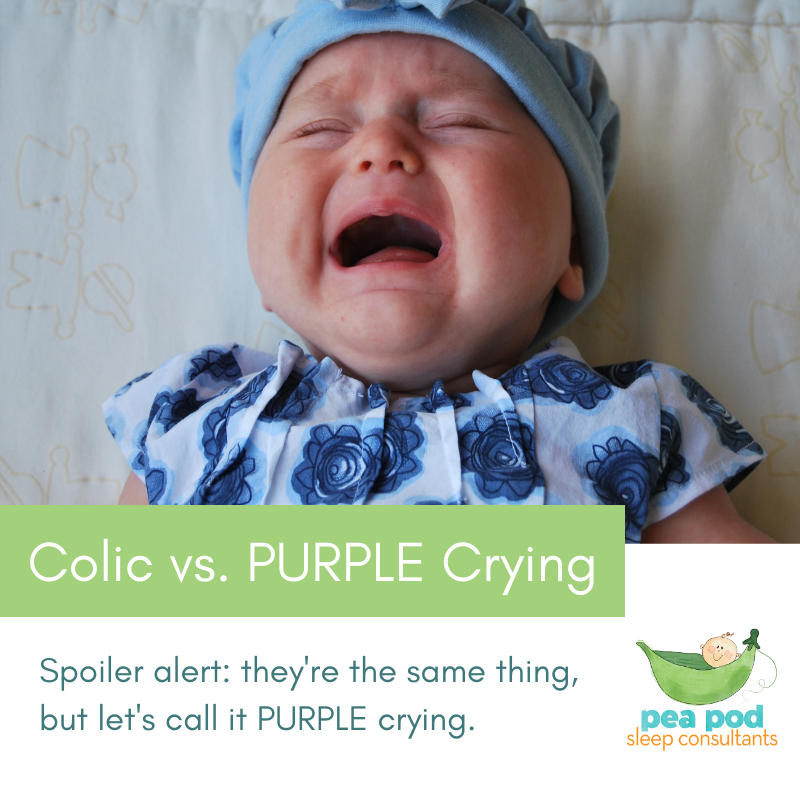
Babies cry. Some babies cry a lot. For many years, pediatricians called uncontrollable bouts of crying “colic.” We want to call it PURPLE crying instead.
Background on Colic
This crying usually starts around two or three weeks of age, peaks at six weeks and ends by 12-20 weeks.
Babies diagnosed with colic meet a 3:3:3 criteria
- 3 hours of crying
- 3 times each week
- 3 weeks in a row.
Here’s the problem: giving a colic diagnosis is misleading. It causes parents to think their child is unusual or unwell. There is medication for colic, but again, prescribing something reinforces a notion that something is wrong with your child. And all of this can lead to parents feeling guilty, feeling like they did something wrong to cause their child to cry.
You didn’t do anything wrong. There is nothing wrong with your baby. This is normal and it will end.

Significant bouts of crying are a normal, developmental phase. While there is a wide range in the severity of fussiness and/or crying in this phase, all babies go through it. Some babies are mildly fussy and cry a little, while others experience uncontrollable bouts of crying.
In recent years, the acronym PURPLE has been used to describe this period. It is a much better way to convey to parents and other caregivers that this is normal. The acronym, created by Dr. Ronald Barr, describes the key characteristics of infant crying during this period. While this can be upsetting and frustrating for parents-again- it is a normal phase in infant development.
The period of PURPLE crying
| P | U | R | P | L | E |
| Peak of Crying | Unexpected | Resists Soothing | Pain-like Face | Long Lasting | Evening |
| Your baby may cry more each week, the most in month 2, less in months 3-5 | Crying can come and go and you don’t know why | Your baby may not stop crying no matter what you try | Crying babies may look like they’re in pain, even when they’re not. | Crying can last as much as 5 hours a day, or more | Your baby may cry more in the late afternoon or evening. |
This phase, referred to as The Period of Purple Crying, lets parents know that this is temporary. So, let’s just call “colic” PURPLE crying to help parents remember this has a beginning and an end. It generally starts around two weeks of age, peaks at six weeks and ends between 12-30 weeks.
My Baby Won’t Stop Crying- What do I do?
First and foremost, address the essentials.
- Is your baby hungry?
- Does your baby have gas and need to burp?
- Does your baby have a wet or dirty diaper?
- Is your baby overstimulated?
- Is your baby overtired?
- Is your baby teething?
- Could your baby be sick?
If you’ve addressed all of your baby’s needs, it’s time to bring out all of your soothing techniques.
Dr. Harvey Karp, renowned pediatrician and author of The Happiest Baby Guide to Great Sleep, developed the 5 S’s routine to calm a crying baby. These 5 S’s mimic the womb-like environment that your baby had for nine months.
- Swaddle (or “wear” your baby)
- Side or stomach positioning (except for sleep)
- Shushing (white noise)
- Swinging or swaying (repetitive motion)
- Sucking (breast or pacifier)
If your pediatrician has reassured you that there’s nothing serious going on, remind yourself that this is a normal phase in infant development and that it will come to an end. Period!
